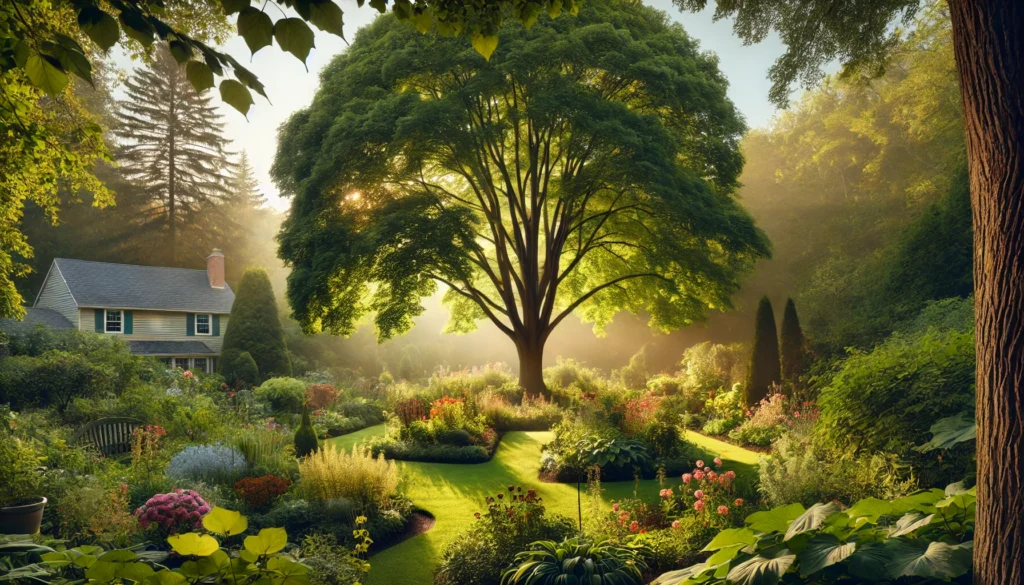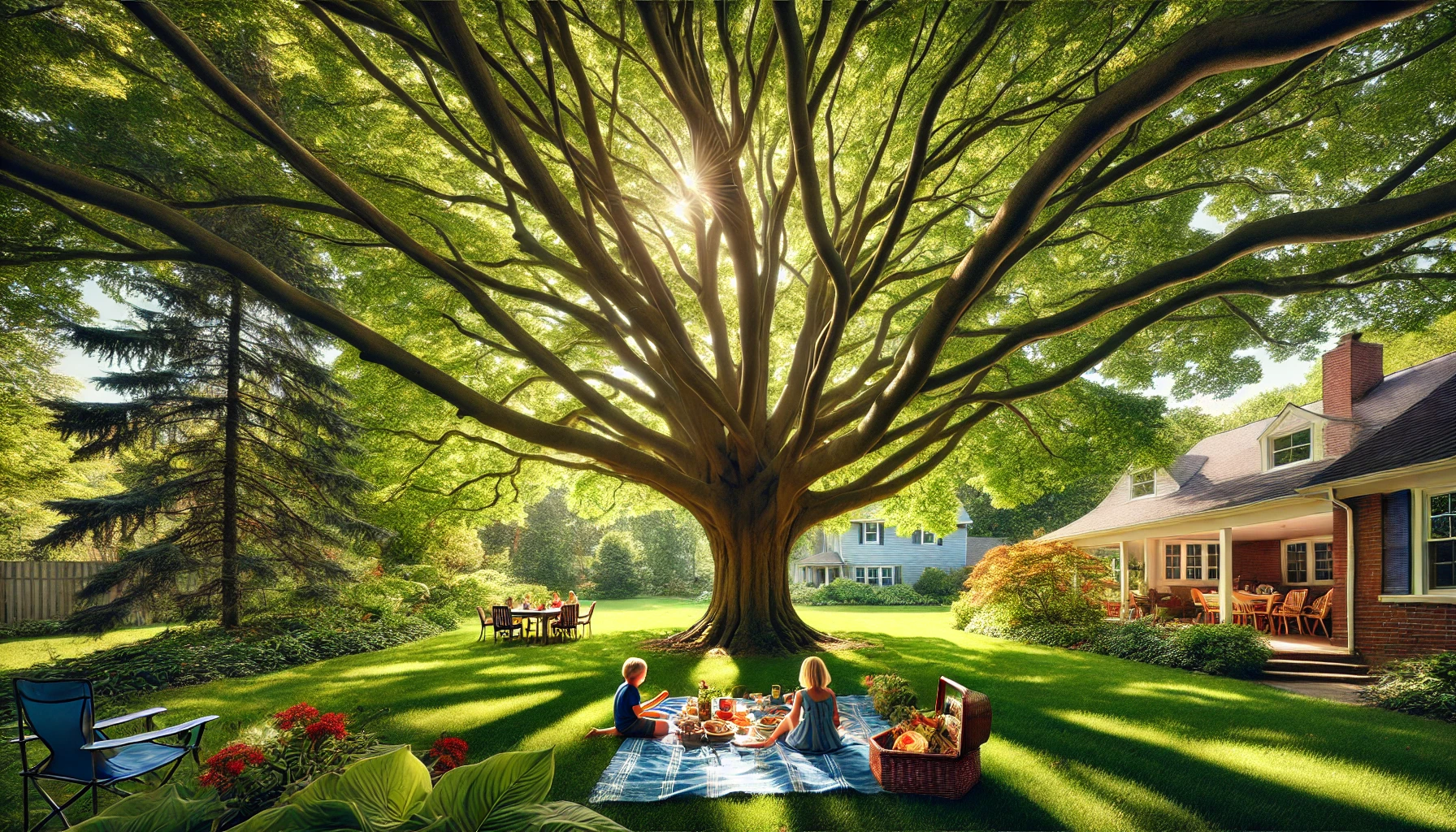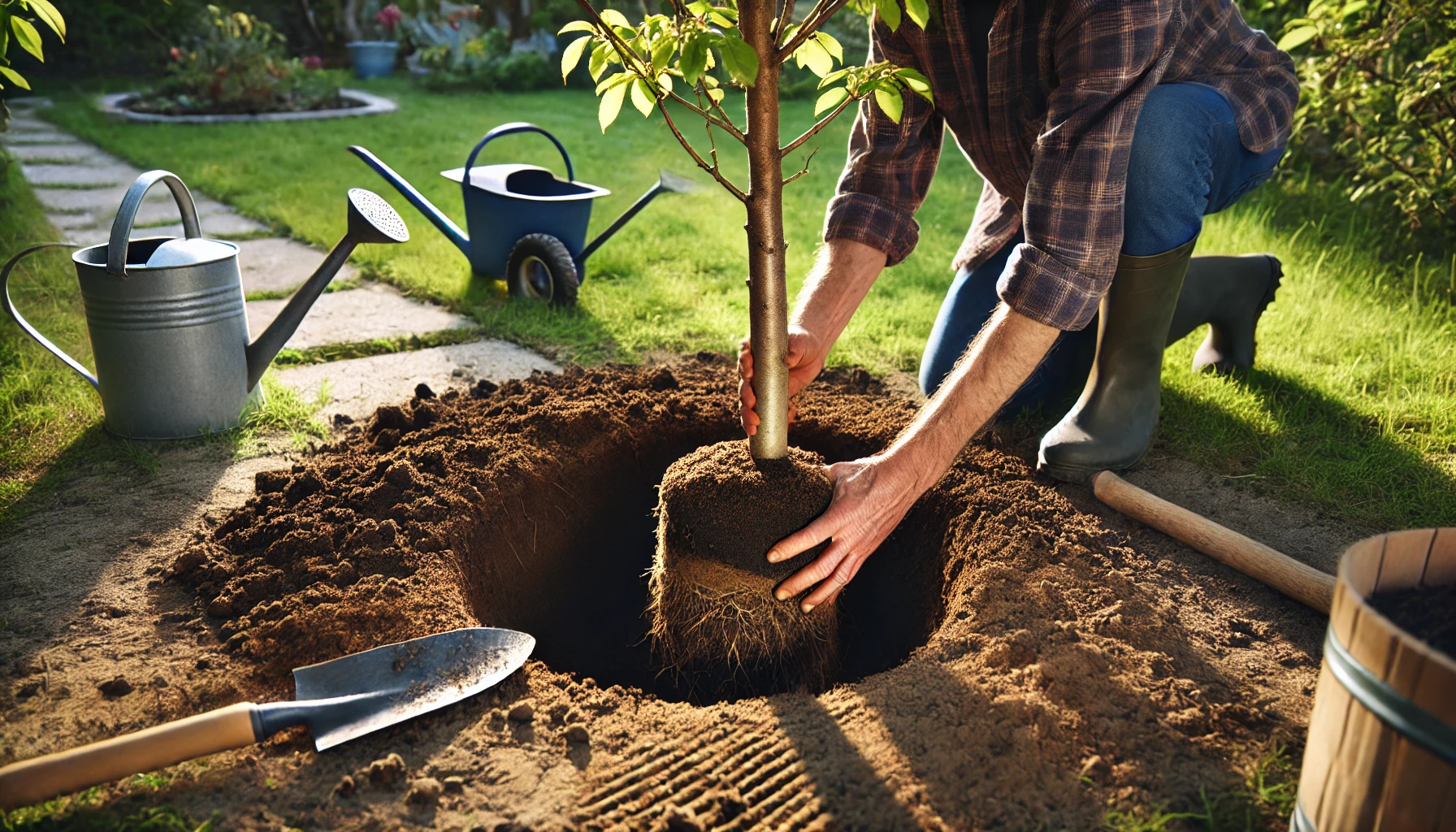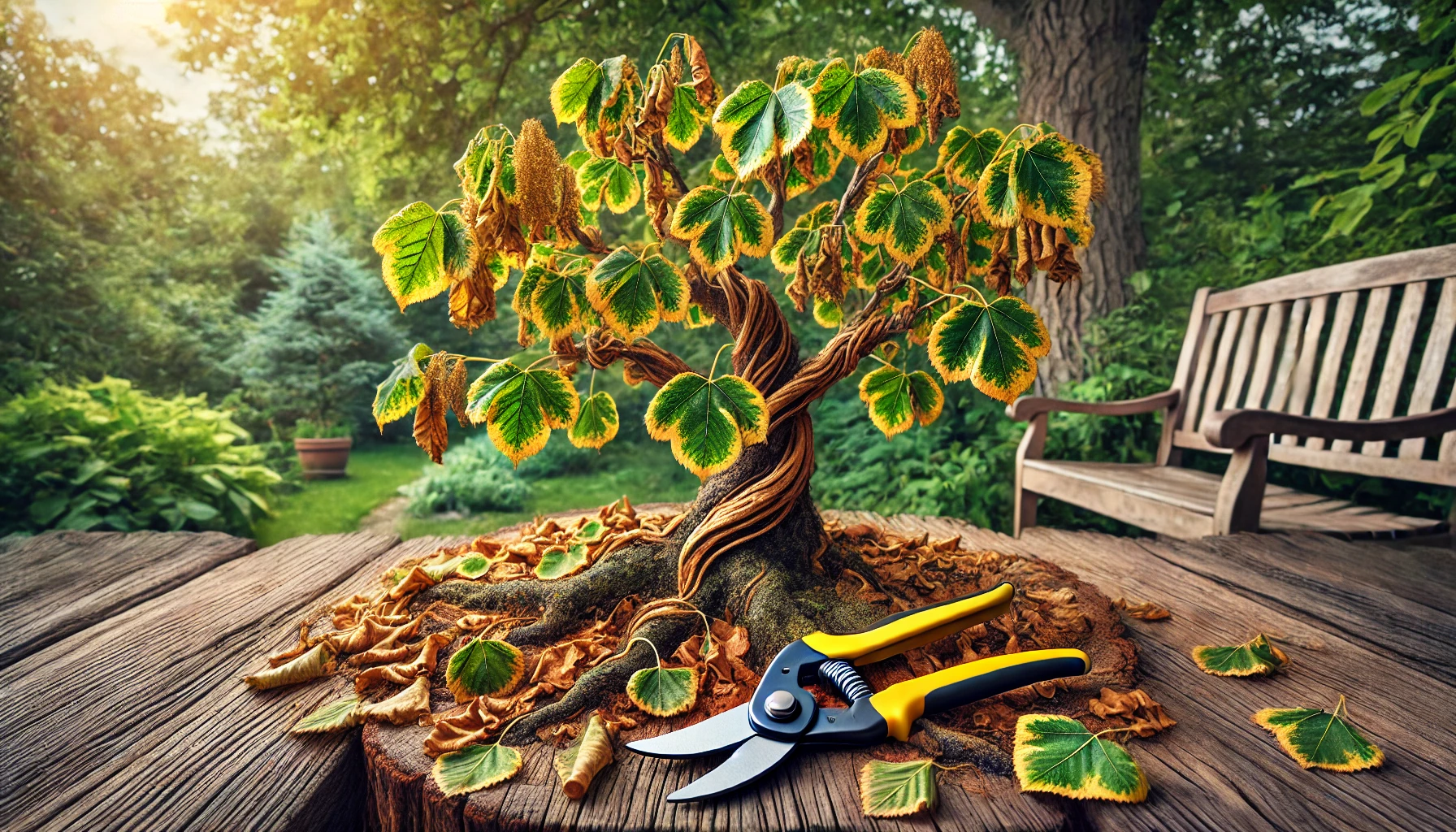
The Ultimate Guide to Elm Trees in Michigan: Planting, Care, and Maintenance Tips for Thriving in Michigan's Climate
Are you looking to add a resilient and beautiful tree to your Michigan landscape? Elm trees in Michigan are not only stunning, but they also thrive in the state’s diverse climate, offering shade and beauty year-round. However, planting and maintaining elm trees can be tricky if you don’t know the best practices to follow.
Whether you’re a seasoned gardener or a beginner, understanding how to properly care for elm trees in Michigan is key to ensuring they grow strong and healthy. In this comprehensive guide, we’ll walk you through everything from selecting the right variety to planting and maintaining your tree, so it flourishes even in Michigan’s unpredictable weather.
By the end of this guide, you’ll have all the knowledge you need to create the perfect environment for your elm tree. Ready to make your Michigan garden greener and more vibrant? Keep reading to discover expert tips that will help your elm trees thrive!
Table of Contents
ToggleWhy Choose Elm Trees for Michigan?
Elm trees are a fantastic choice for Michigan landscapes, offering both beauty and practicality. Whether you’re a seasoned gardener or just starting out, here’s why you should consider adding an elm to your yard.
1. Perfect for Michigan’s Climate 
Elm trees thrive in Michigan’s diverse climate, from cold winters to hot summers. Their ability to withstand both extreme cold and humid conditions makes them a reliable choice year-round. In fact, they’re known for being hardy in USDA zones 3-9, which includes most of Michigan!

2. Low Maintenance and Durable 
One of the best things about elm trees is how easy they are to care for. Once established, they require minimal attention. They’re also resistant to many pests and diseases that affect other tree species, meaning fewer worries for you.
3. Stunning Shade and Structure 
If you’re looking for a tree that provides excellent shade during Michigan’s hot summer months, the elm tree is a top contender. With its broad, dense canopy, it creates a cooling oasis in your yard. Imagine relaxing under the shade of a majestic elm while enjoying a cool breeze!
4. Fast-Growing and Space-Efficient 
Elm trees grow relatively quickly, so you don’t have to wait decades for that impressive canopy. They’re also adaptable to different soil types and can fit into a variety of spaces, from large lawns to urban streets.
5. Beautiful Autumn Colors 
When fall comes around, elms reward you with beautiful golden to yellow leaves, adding a pop of color to your landscape. The vibrant autumn display is a real treat for the eyes!
6. Wildlife-Friendly 

Elm trees also support local wildlife. Their strong branches and dense canopy provide a safe space for birds, squirrels, and other critters. Plus, the leaves offer a natural habitat for beneficial insects.
Final Thoughts 
With their hardiness, low maintenance, and beauty, elm trees are an excellent choice for Michigan homeowners looking to enhance their landscapes. Whether you’re after shade, beauty, or a tree that stands up to the elements, the elm is a smart, long-lasting addition to your yard.
Ready to plant your own elm tree? It’s time to enjoy the many benefits these wonderful trees offer!
Types of Elm Trees in Michigan 
When it comes to elm trees in Michigan, you’ll find a variety of species that thrive in the state’s diverse climate. Understanding which type of elm tree is best for your space can help you make an informed decision for your landscape. Here’s a breakdown of the most common types of elm trees you can plant in Michigan!

1. American Elm (Ulmus americana) 
The American Elm is a classic and beloved choice for Michigan landscapes. Known for its tall stature and beautiful, arching canopy, this elm is perfect for creating shade in your yard. It can grow up to 100 feet tall, making it a great addition for larger properties. However, it’s important to note that this species can be susceptible to Dutch Elm Disease (DED), so be sure to monitor the tree for signs of disease.
Best for: Large yards, parks, and streetscapes.
Key tip: Plant in well-drained soil with good air circulation to help prevent disease.
2. Slippery Elm (Ulmus rubra) 
The Slippery Elm is another common elm in Michigan, named for the slimy texture of its inner bark, which has medicinal uses. This tree is smaller than the American Elm, growing up to 50-60 feet, making it perfect for smaller yards or as a specimen tree in your garden. Slippery Elms are also quite hardy, able to withstand cold winters and wet soil conditions, which makes them an excellent choice for Michigan’s climate.
Best for: Smaller yards and wet areas.
Key tip: Avoid planting near sidewalks or driveways, as its roots can lift concrete.
3. Chinese Elm (Ulmus parvifolia) 
The Chinese Elm is a popular choice for urban landscapes because it’s resistant to Dutch Elm Disease and has a compact growth habit. With its unique, dark green leaves and smooth, mottled bark, this elm can add both beauty and resilience to your garden. It’s a fast-growing tree and does well in both full sun and partial shade.
Best for: Urban landscapes, city parks, and medium-sized yards.
Key tip: Chinese Elms tolerate drought better than most, so water less frequently once established.
4. Hybrid Elm (Ulmus hybrids) 
Hybrid elms are a cross between American Elms and resistant species like the Chinese Elm, and they’re a great option for Michiganders looking for a hardy elm tree. These trees are often disease-resistant and can grow quickly to provide ample shade. The hybrid elm’s growth habits and size can vary, but they generally reach between 50-70 feet tall.
Best for: Those looking for a fast-growing, low-maintenance tree.
Key tip: Hybrid elms are very adaptable, so plant them in any soil type for great results.
5. Dwarf Elm (Ulmus pumila) 
If you’re limited on space but still want to enjoy the beauty of an elm tree, the Dwarf Elm is a fantastic option. Reaching just 20-30 feet tall, this tree has a dense, compact canopy that provides excellent shade in smaller spaces. It’s also resistant to Dutch Elm Disease, making it a low-maintenance choice for gardeners looking for an elm without the risk of disease.
Best for: Small yards, gardens, and urban settings.
Key tip: Dwarf Elms are hardy and require minimal care—perfect for beginners!
Conclusion 
Choosing the right type of elm tree for your Michigan property depends on your specific needs—whether you’re after a large, majestic tree or a smaller, disease-resistant option. The American Elm and Slippery Elm are traditional favorites, while the Chinese Elm and Hybrid Elm offer resilience and faster growth. If you’re working with limited space, consider a Dwarf Elm for a manageable and charming addition to your landscape.
Happy planting, and enjoy the beauty these magnificent trees bring to your yard!
Planting Your Elm Tree in Michigan 
Planting an elm tree in Michigan can be a rewarding experience, whether you’re enhancing your landscape or looking to contribute to the environment. Elm trees thrive in Michigan’s climate, but successful planting requires a bit of knowledge and care. Here’s a simple, step-by-step guide to help you plant your elm tree and ensure it flourishes in your yard.
1. Choose the Right Location 
Selecting the right spot for your elm tree is the first step. Elms thrive in well-drained soil and prefer areas that receive full sun, though they can tolerate partial shade. Make sure the site is spacious enough to allow your tree to grow to its full size (up to 50 feet tall in some cases). Avoid planting near buildings, power lines, or other trees that could compete for space.
2. Prepare the Soil 
Before planting, prepare the soil by loosening it and removing any weeds or grass. Elm trees prefer slightly acidic to neutral soil (pH of 6.0–7.5). If your soil is too clayey, mix in organic matter such as compost or peat moss to improve drainage. For sandy soils, consider adding organic material to help retain moisture.
3. Dig the Hole 
Dig a hole that is twice as wide and the same depth as the root ball of your elm tree. This ensures the roots can spread out easily and establish themselves. When you remove the tree from its container, gently loosen the roots if they are tightly bound. This encourages them to grow outward into the surrounding soil.
4. Plant the Tree 
Place your elm tree in the hole and ensure that the root collar (where the roots meet the trunk) is level with the surrounding soil. This helps the tree establish roots properly. Fill the hole with soil, gently patting it down as you go to eliminate air pockets. Water the tree generously to settle the soil around the roots.

5. Water and Mulch 

After planting, water your elm tree thoroughly. Keep the soil moist, especially during the first year as the tree establishes itself. Adding a 2-3 inch layer of mulch around the base of the tree helps retain moisture and prevent weeds. Be sure to keep the mulch away from the tree trunk to prevent rot.
6. Stake the Tree (If Necessary) 
If your elm tree is tall or planted in a windy area, you may need to stake it to provide support while the roots take hold. Use soft materials like garden ties to avoid damaging the tree. Stakes should be removed once the tree is stable and rooted.
7. Ongoing Care 
Keep an eye on your elm tree’s progress, particularly in its first few years. Regular watering is crucial, especially during dry spells. Once your tree is established, elm trees are quite drought-tolerant and require minimal maintenance. Fertilize your tree in early spring to encourage healthy growth and ensure it thrives in Michigan’s climate.
By following these simple steps, you’ll set your elm tree up for success, allowing it to thrive for years to come.
Watering and Mulching Elm Trees
Proper watering and mulching are essential for the health and growth of your elm trees in Michigan. These simple practices can help your tree thrive, especially during the hot summer months and colder winters. Here’s what you need to know to ensure your elm tree gets the right care:
Watering Elm Trees 
Elms are relatively drought-tolerant once established, but young trees or newly planted elms need regular watering to develop strong roots.
- Frequency: Water deeply once a week during dry spells, especially in summer. Young trees require more frequent watering, around twice a week, to establish their root system.
- Amount: Water until the soil is moist to a depth of 6 to 8 inches. It’s better to water deeply and less frequently than to water shallowly every day. This encourages roots to grow deeper, making the tree more resilient to drought conditions.
- Time of Day: Early morning is the best time to water your elm tree. Watering in the morning helps the soil absorb the moisture before the sun evaporates it, preventing fungal growth that can occur when watering late in the evening.
- Signs of Overwatering: If you notice yellowing leaves or wilting despite wet soil, your tree may be overwatered. Ensure the soil has good drainage to avoid root rot.

Mulching Around Elm Trees 
Mulch helps retain soil moisture, regulate temperature, and prevent weeds from competing with your elm tree for nutrients. It’s a simple yet powerful tool for tree care.
- Mulch Type: Use organic mulches like wood chips, bark, or shredded leaves. These materials decompose slowly, enriching the soil over time.
- Mulch Depth: Apply a 2-4 inch layer of mulch around the base of the tree, but avoid piling it directly against the trunk. Leave a small gap around the trunk to prevent moisture buildup and the risk of rot.
- Mulch Placement: Spread the mulch in a circle around the tree, extending the coverage to the drip line (the area directly beneath the outermost branches). This helps ensure that the tree’s root system gets consistent moisture and protection.
- Replenishing Mulch: Refresh the mulch layer every year to maintain its effectiveness. As it breaks down, it continues to improve the soil structure, providing ongoing benefits to your elm tree.
By following these watering and mulching tips, your elm tree will have the best start to a long, healthy life in Michigan’s climate.
Caring for Elm Trees in Michigan Year-Round 
Elm trees are a beautiful addition to any Michigan landscape, offering shade, beauty, and environmental benefits. However, to ensure your elm thrives in Michigan’s diverse climate, regular care is essential. Here’s how to care for your elm tree year-round, from spring through winter, keeping it healthy and vibrant.

Spring: A Fresh Start 
As the weather warms up, your elm tree begins its growth cycle. Spring is the perfect time to give it a little extra attention.
- Prune Dead or Damaged Branches: Trim away any dead or broken branches to promote healthy new growth and improve the tree’s structure.
- Fertilize: Apply a slow-release balanced fertilizer in early spring. This provides essential nutrients to boost growth without overfeeding.
- Mulch: Add a layer of mulch around the base of the tree. Mulch helps retain moisture, regulate soil temperature, and protect the roots.
Summer: Protect from Stress 
Michigan summers can be hot and dry, which can put stress on your elm tree. Here’s how to help it stay cool and healthy:
- Water Regularly: Elm trees need consistent watering, especially during dry spells. Aim to water deeply once a week, ensuring the roots receive plenty of moisture.
- Monitor for Pests: Elm trees can attract pests like aphids and elm leaf beetles. Keep an eye on the leaves and treat infestations promptly with eco-friendly insecticides or by manually removing pests.
- Avoid Over-Pruning: While it’s tempting to prune during the summer, avoid heavy pruning in this season. Wait until the tree is dormant in winter or early spring.
Fall: Prepare for Winter 
As temperatures begin to drop, it’s time to prepare your elm tree for the colder months ahead.
- Reduce Watering: As the tree enters dormancy, its water needs decrease. Watering should be less frequent, but ensure the soil doesn’t dry out completely.
- Fertilize Lightly: Apply a light dose of fertilizer to encourage strong root development before the winter freeze.
- Rake and Clean: Remove fallen leaves and debris around the base of the tree to prevent diseases and pests from taking hold.
Winter: Protect from the Cold 
Michigan winters can be harsh, but with the right care, your elm tree will survive and come back strong in spring.
- Wrap the Trunk: To prevent frost cracks and sunscald, wrap the tree’s trunk with tree wraps or burlap, especially for younger trees.
- Snow and Ice: Gently remove any heavy snow or ice build-up from branches. Avoid shaking branches or using sharp tools, as this can cause damage.
- Keep an Eye on Salt: If your elm tree is near roadways, watch for salt damage. Salt can harm the roots, so rinse the area around the base of the tree if necessary.
Year-Round Care Checklist 
- Prune damaged branches
- Apply mulch and fertilizer
- Water consistently, especially in dry periods
- Monitor for pests and diseases
- Maintain proper spacing and airflow around the tree
By following these simple year-round care tips, your elm tree will thrive through every season, adding beauty and shade to your Michigan landscape for years to come.
Troubleshooting Elm Tree Problems 
Elm trees are a beautiful addition to any garden or landscape, but like all plants, they can face a variety of issues. Whether you’re a seasoned gardener or a beginner, troubleshooting common elm tree problems can help ensure your trees stay healthy and thrive in Michigan’s unique climate.
1. Elm Tree Disease: Dutch Elm Disease (DED) 
Dutch Elm Disease is one of the most common and deadly threats to elm trees. It’s caused by a fungus spread by beetles. Early signs of DED include yellowing leaves, wilting branches, and a sudden decline in the tree’s health.
How to Fix It:
- Prune infected branches immediately to prevent the spread of the fungus.
- Call a professional arborist for advice and possible treatment.
- Fungicide applications can sometimes help protect healthy trees, but they must be applied before the disease takes hold.

2. Elm Leaf Spot 
Elm leaf spot is a fungal disease that causes brown or black spots to appear on leaves, especially during wet spring and summer weather. While not usually fatal, it can weaken the tree over time.
How to Fix It:
- Remove fallen leaves and dispose of them to reduce the spread of spores.
- Apply fungicide in the spring before the disease begins.
- Ensure good air circulation around the tree by trimming any dense or crossing branches.
3. Pests: Elm Bark Beetles 
Elm Bark Beetles are the primary vectors for Dutch Elm Disease, but they can also damage healthy trees. These beetles create tiny holes in the bark and may lead to twig and branch dieback.
How to Fix It:
- Inspect your trees regularly for beetle activity, such as small holes or dark streaks under the bark.
- Insecticidal sprays may help reduce beetle populations, but it’s crucial to apply them during the beetles’ active season.
- Avoid wounding the tree, as injuries can attract beetles.
4. Poor Growth: Nutrient Deficiency 
If your elm tree’s growth seems slow or the leaves are yellowing, it may be due to nutrient deficiencies, especially nitrogen, iron, or magnesium.
How to Fix It:
- Test your soil for nutrient levels and adjust with appropriate fertilizers.
- Use organic mulch to retain moisture and enrich the soil.
- Ensure proper watering: Elm trees need deep watering but dislike being waterlogged.
5. Overwatering or Underwatering 
Too much or too little water can stress your elm tree. Overwatering can lead to root rot, while underwatering can cause drought stress, especially during hot Michigan summers.
How to Fix It:
- Check the soil: It should be moist but not soggy. A good rule is to water deeply once a week, especially during dry spells.
- Improve drainage around the tree if you notice water pooling around its roots.
6. Environmental Stress: Sunburn & Wind Damage 

Elm trees, like many plants, can suffer from environmental stress. Too much direct sun can scorch leaves, and high winds can break branches or cause dehydration.
How to Fix It:
- Provide shade during the hottest parts of the day, especially when trees are young.
- Protect young trees with windbreaks or temporary coverings to shield them from harsh winds.
Conclusion
By understanding common elm tree problems and taking proactive steps, you can ensure your trees remain healthy and continue to enhance your landscape. Regular care and attention, from pruning to pest control, will help your elm trees thrive in Michigan’s diverse climate.
Winterizing Your Elm Tree in Michigan 

As winter approaches in Michigan, it’s crucial to prepare your elm tree for the cold months ahead. The harsh winters can be tough on trees, but with proper care, your elm can stay healthy and strong throughout the season. Here’s how to winterize your elm tree effectively.
1. Mulch Around the Base 
Mulching is one of the simplest and most effective ways to protect your elm tree during winter. Apply a 2-4 inch layer of mulch around the base of the tree, extending a few feet outward. This helps to insulate the soil, keeping the roots warmer and preventing the ground from freezing too deeply. Avoid piling the mulch directly against the trunk to prevent moisture buildup that could lead to rot.
2. Water Deeply Before Freezing 
In late fall, before the ground freezes, give your elm tree a deep watering. This is essential because trees still need water during the winter months, and well-hydrated trees are better equipped to survive freezing temperatures. Ensure the water reaches the root zone by soaking the area thoroughly. This will help your elm stay hydrated even when the ground is frozen.
3. Prune Dead or Damaged Branches 
Before winter hits, inspect your elm tree for any dead or damaged branches. Prune them to prevent any additional stress during the winter. This will not only help the tree conserve energy but also reduce the risk of branches breaking under the weight of snow or ice. Be sure to use sharp, clean pruning tools to make clean cuts that will heal properly.
4. Protect the Trunk with Tree Wrap 
Young or vulnerable elm trees can benefit from tree wraps, which provide a protective barrier against freezing temperatures and sunscald. Tree wraps can also help prevent damage from rodents that might chew on the bark during the winter months. Wrap the tree trunk with burlap or a specially designed tree wrap, starting from the ground and working your way up to just below the first branches. Be sure to remove the wrap in spring to avoid trapping moisture.

5. Avoid Fertilizing in Late Fall 
While it’s tempting to give your elm tree one last boost of nutrients before winter, it’s best to avoid fertilizing in late fall. Fertilizing encourages new growth, which is vulnerable to frost damage. Wait until early spring when the tree is starting to emerge from dormancy to provide any additional nutrients.
6. Consider Anti-Desiccant Sprays 
In areas with strong winter winds, anti-desiccant sprays can help reduce moisture loss from the tree’s leaves and branches. These sprays form a protective coating on the tree’s surface, preventing dehydration caused by wind and low humidity. Apply the spray in early winter, following the manufacturer’s instructions for optimal results.
7. Watch for Salt Damage 
Michigan’s winters often involve road salt to combat ice. Be mindful of salt runoff near your elm tree, as it can damage the tree’s roots. If you notice salt buildup around the base of the tree, rinse it away with water to prevent long-term damage to the roots.
By following these simple yet effective winterizing steps, your elm tree will be better equipped to handle the cold, ensuring it thrives once spring arrives. 
Conclusion
Planting and caring for elm trees in Michigan is a rewarding experience that brings both beauty and practical benefits to your landscape. Whether you’re planting for shade, aesthetic appeal, or ecological value, elm trees thrive in Michigan’s diverse climate when given the proper care.
By following the steps outlined in this guide—from choosing the right variety and planting techniques to ongoing maintenance like watering, mulching, and pruning—you can ensure that your elm tree grows strong and healthy for years to come. With their resilience to pests, ability to withstand Michigan’s cold winters, and their lush, shade-giving canopies, elm trees are a perfect addition to any yard.

Remember, patience is key. While it may take a few years for your tree to reach its full potential, the results will be worth the effort. So, take the first step today, and start nurturing your own beautiful, thriving elm tree in Michigan.
Start your journey towards a greener, more vibrant landscape with a Michigan elm tree and watch as it transforms your garden into a stunning oasis!
Frequently Asked Questions(FAQ)
What is the best time to plant elm trees in Michigan?
The best time to plant elm trees in Michigan is either in early spring or fall. These seasons offer mild temperatures, allowing the tree’s roots to establish before the hot summer or cold winter months. Planting during these times helps reduce transplant shock and supports healthy growth.
How do I choose the right elm tree variety for Michigan?
For Michigan, consider disease-resistant varieties such as the Princeton Elm or hybrid elms like Ulmus ‘Morton’. These varieties thrive in Michigan’s climate and are less prone to Dutch Elm Disease, making them ideal for both homeowners and landscapers looking for low-maintenance options.
How often should I water my elm tree in Michigan?
Water your elm tree deeply once a week during dry spells, especially in the first year after planting. Elm trees prefer consistently moist soil but don’t tolerate waterlogged conditions, so be sure to allow the soil to dry slightly between waterings. In rainy seasons, you may not need to water as often.
Can elm trees survive Michigan’s harsh winters?
Yes, elm trees are well-suited to Michigan’s cold winters. Varieties like the American Elm and Princeton Elm are hardy and can withstand freezing temperatures, provided they are properly cared for. Mulching and wrapping young trees in burlap can help protect them during the harsh winter months.
How do I prevent Dutch Elm Disease in my Michigan elm tree?
To prevent Dutch Elm Disease, plant disease-resistant varieties such as the Princeton Elm. Regularly inspect your tree for symptoms like yellowing leaves or wilting. Prune and remove any infected branches immediately, and avoid storing or moving firewood from infected trees to reduce risk.
Why are the leaves on my elm tree turning yellow?
Yellowing leaves on your elm tree could be a sign of overwatering, underwatering, or a nutrient deficiency. Ensure the soil drains properly and check your watering routine. If necessary, apply a balanced fertilizer to help restore nutrients, especially during the growing season.
How can I prune my elm tree in Michigan?
Prune your elm tree in late winter or early spring before new growth begins. Remove any dead, damaged, or diseased branches, and trim back any crossing branches to improve airflow. Avoid heavy pruning during the growing season to prevent stress on the tree.
What pests should I look out for on elm trees in Michigan?
Common pests that affect elm trees in Michigan include aphids, elm leaf beetles, and caterpillars. Regularly inspect your tree for signs of damage like curled or discolored leaves. Use eco-friendly insecticides like neem oil or insecticidal soap to treat infestations early.








